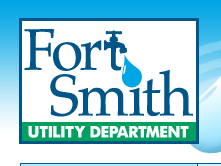|
While water providers have taken steps
to limit lead in drinking water, you can take the following
steps if you are concerned about your lead exposure:
- Find out about lead testing
results in your community. Each utility’s annual Consumer
Confidence Report contains information on lead monitoring
conducted under the Safe Drinking Water Act. If you do not
have a Consumer Confidence Report, contact your utility for
a copy.
- You can’t see, smell or taste lead in your water.
Testing at the tap
is the only way to measure the lead levels in your home or
workplace.
If you choose to have your tap water tested, be sure to use
a properly certified laboratory. Testing usually costs between
$20 and $100.
- Flushing your water tap is
a simple method to help you avoid high lead levels. Flushing
clears water from your plumbing and home service line to ensure
you are getting drinking water from the main, where lead is
rarely present.
- Let the water run from the
tap until it is noticeably colder (this may take two minutes
or more) before using it for cooking or drinking. Flushing
the tap is particularly important when the faucet has gone
unused for more than a few hours, because the longer water
resides in your home's plumbing, the more lead it may contain.
- The water from this “first
flush” need not be wasted. You can use
it for other purposes such as watering plants. You might also
consider drawing your drinking or cooking water shortly after
a high-use water activity such as bathing or washing. Those
activities will flush a significant amount of water from your
home's pipes.
- If you live in a high-rise
building with many water pipes, flushing the tap may not be
effective in reducing lead levels. If you are concerned about
lead in your drinking water, talk to your landlord or consult
your local health department about ways to minimize your exposure.
- Use only cold water for cooking
or drinking. Lead leaches more easily into hot water than
cold water. Boiling water DOES NOT remove lead.
- Have a licensed plumber determine
if your home contains lead solder, lead pipes or pipe fittings
that contain lead. A plumber can also determine if your home
has a lead service line connecting your home plumbing
to the community water system’s water main. The presence
of these materials does not mean you have lead in your water,
but the potential exists.
- Make sure that repairs to
copper piping do not use lead solder.
- Some home treatment devices
remove lead, but not all do.
Before you purchase a home treatment device, you should verify
the manufacturer’s claims. A good resource to assist
you is NSF International (www.nsf.org).
Once a treatment device is installed,
make sure it is properly maintained.
- Using bottled water is also
an alternative. (Information on the lead
levels in bottled water is available from bottled water manufacturers.)
- Consult with your family doctor
or pediatrician to receive a blood test for lead and learn
more about the health effects associated with exposure. The
Centers for Disease Control and Prevention recommends all
children be tested for lead.
|





